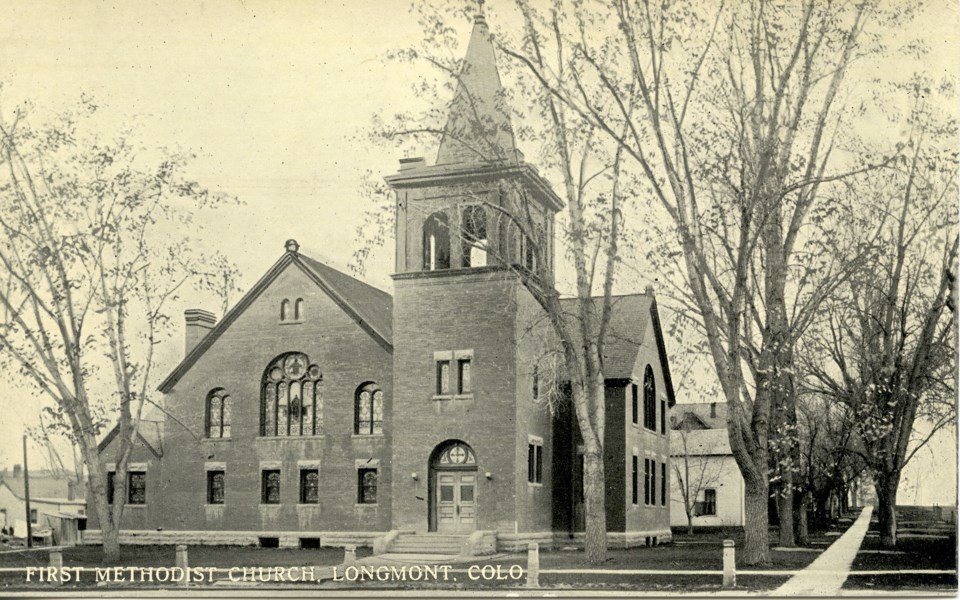Religious leaders and their churches were the core of late 19th-century frontier settlements. That is particularly true of Longmont, where church leaders were part of the community from its earliest days.
Three ministers in the city’s first half-century made notable contributions to the area. Each had established remarkable lives prior to their service here, and their talents, focus and hard work contributed to establishing a long-term religious presence in the city.
Robert Collyer
Chicago minister Robert Collyer was a key leader in the organization of the earliest days of Longmont’s predecessor, The Chicago-Colorado Colony, according to Longmont, the First 150 Years, by Erik Mason Although Collyer never actually came west, he encouraged migration here as part of an emphasis on westward expansion and temperance.
The minister’s early life wasn’t easy. He had little formal education, at eight years old he was sent by his family to work in the mills and he eventually became a blacksmith. When his wife died in childbirth, the tragedy set him on a course to ministerial work and, later, emigration to America.
In America, Collyer was known as an abolitionist, as an advocate for the temperance movement and for his work with the poor. Eventually, he became known as “the blacksmith preacher” and his sermons were distributed as pamphlets throughout the U.S.
Collyer served at the front lines during the Civil War and then moved to Chicago. After living there for 12 years, he experienced the Great Chicago Fire, which devoured a new church he had recently constructed, according to a post by the Harvard Square Library. In this same time period though just prior to the fire, Collyer took on his leadership role in the Chicago-Colorado Colony that led to the subsequent founding of Burlington and then Longmont. Names of others who founded it with him include Sidney Howard Gay, William Bross, Colonel C.N. Pratt, George S. Bowen, H.D. Emery and S.D. Kimbark.
In tribute to their efforts, multiple streets in Old Town Longmont carry the names of these founders and both a street and a public park are named for Collyer.
Sheldon Jackson
Sometimes called the “St. Paul of the West,” Sheldon Jackson conducted extensive missionary activity in the American West throughout the last half of the 19th century, The Journal of Presbyterian Historical Society.
Between 1859 and 1869, he founded 20 churches in Wisconsin and Minnesota alone. The following decade took him to the west where he is believed to have founded 80 churches including those in Colorado and Alaska.
While in Colorado, one of the churches he organized is the First Presbyterian Church/Central Presbyterian Church on Old Town in Kimbark St, according to a record of history on the Central Presbyterian Church’s website Jackson’s work in Alaska followed his time in Colorado when, at the request of the U.S. Secretary of the Interior, he was named General Agent of Education in Alaska. According to Alaskool.org, “he educated children in Alaskan towns and Villages” The Sheldon Jackson Museum in Sitka, Alaska, is the oldest museum in the state and is named in his honor, state a historical account by the Alaska State Museum.
Monroe Markley
In 1913, Monroe Markley became pastor of the First Congregational Church in Longmont and used the power of communication to support his mission. Before coming to Longmont, Markley was a well known orator, who traveled the Chautauqua and lyceum circuits, according to the Find a Grave website.
Looking to reach a large crowd in Longmont, Markley turned to Longmont’s newspaper at the time, the Daily Times, and convinced the editors there to allow him to publish “two minute sermons” on the paper’s front page.
These sermons were published during some of the nation’s darkest days, includingWWI and the 1918 pandemic, when church services were largely shuttered as a public safety measure.
Erik Mason, curator of research at the Longmont Museum, contrasted Markley’s approach during the pandemic with that of Thomas Worrall, the pastor of St. Stephen’s Church during the same era. In his book, Mason said Worrell, “defied a ban on gathering to hold a November 28th Thanksgiving Service. He was arrested on December 2nd. Mason theorized that it was the only time in Longmont history that a minister was arrested holding a service.


